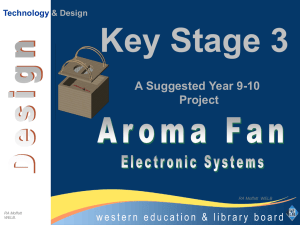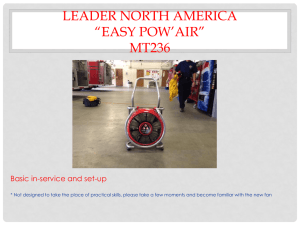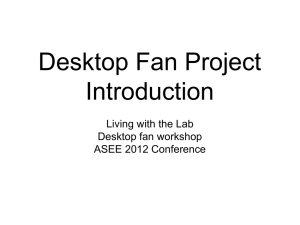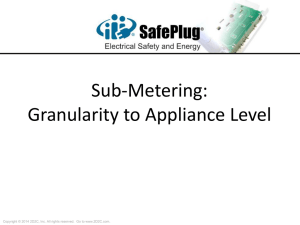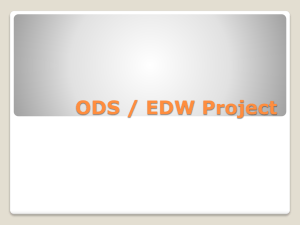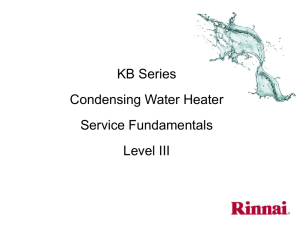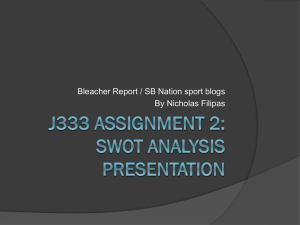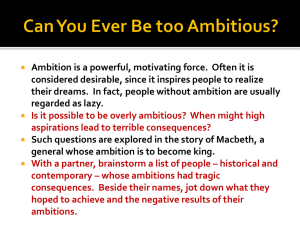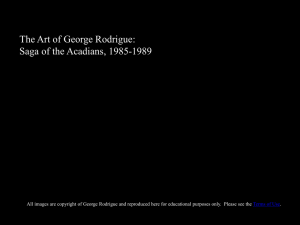Title Slide
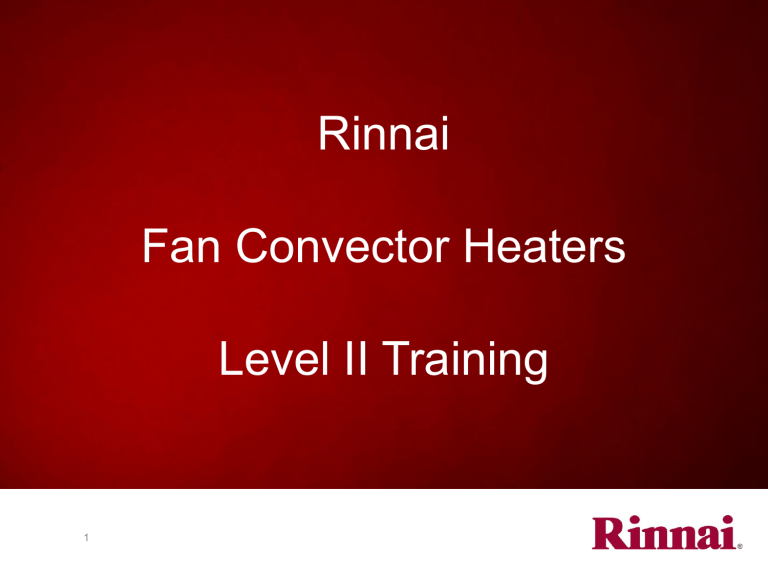
1
Rinnai
Fan Convector Heaters
Level II Training
Fan Convector Heaters
FC510 (RCE-391A) FC824 (RCE-691TA)
2
Specifications
Product specifications
Model
FC510N
(RCE-391AN)
FC510P
(RCE-391AP)
FC824N
(RCE-691TAN)
FC824P
(RCE-691TAP)
Gas Type
Natural Gas
Propane Gas
Input Rating
Btu/hr. HIGH
Input Rating
Btu/hr. LOW
10,000
10,000
5,500
5,600
Gas Inlet Pressure
(89 – 267 mm W.C)
(203 - 330 mm W.C.
Manifold Pressure
HI/LO Inches W.C.
(mm)
CFM LO/HI
1.8 / 0.64 inches W.C.
(47 / 16.3 mm W.C.)
67.8 Low
97.8 High
(82 / 28.6 mm W.C.)
67.8 Low
97.8 High
(Amps)
5
5
Natural Gas 24,000 8,400
5.0 – 10.5 W.C 3.4 / 0.52 inches W.C.
(127 - 267 mm W.C) (87 / 13 mm W.C.)
109.5 Low
215.4 High
5
Propane Gas 22,000 8,000 5
(203 - 330 mm W.C.) (161 / 25.5 mm W.C.) 109.5 Low
215.4 High
3
Specifications
Gas Connection
Gas Control
Burners
Temperature Control
Ignition Sdystem
Electrical Connection
Weight
Dimensions
Efficiency
Clearances from Combustibles
Component/Clearance Specifications
FC510 (RCE-0391A)
1/2" Male NPT
Electronic
Ceramic Burner
Electronic Thermostat
Electronic Spark Ignition
AC 120V, 60 Hz., 19 Watts
22.1 Lbs. (10kg)
Height: 19.4 Inches (492 mm)
Width: 19.2 inches (487 mm)
Depth: 9.6 inches (244 mm)
99.90%
FC824 (RCE-691TA)
1/2" Male NPT
Electronic
Ceramic Burner
Electronic Thermostat
Electronic Spark Ignition
AC 120V, 60 Hz., 29 Watts
26.5 Lbs. (12kg)
Height: 19 Inches (482 mm)
Width: 24 inches (610 mm)
Depth: 9.4 inches (239 mm)
99.90%
Side 2"
Top 2"
Back 2"
Side 2"
Top 2"
Back 2"
4
Ledger Plate Explanation & Warranty
• The letters “RCE” indicates this is a “Rinnai Convector Export” heater.
• The “FC” indicates Fan Convertor Heater.
• The numbers “510 & 824” indicate the model number of heater.
• The letter “T” indicates timers, the FC-824 has dual timers, the FC-510 has a single timer.
• The letter “A” indicates this is an American version.
• These units are not suitable for use in bathrooms or bedrooms. Vent-free heaters installed in bathrooms and/or bedrooms must be wall mounted. Rinnai does not offer a wall mount at the present time.
• Product warranty – 3 year parts, no labor.
5
Features/Benefits
• Push button control and operation
• Combustion indicator lamp turns green when unit is powered up (not firing), turns red when fires and burner is operational.
• Child Lock function
• Electronic ignition
• Programmable thermostat - temperature range between 60 ° F to 80 ° F (16 ° C to 27 ° C)
• Display provides set point temperature and room temperature.
• Display on FC-824 displays time of day.
• Economy mode for energy savings.
• ON/Off Timers for specific operation periods
6
Features/Benefits
• Standby power consumption is less than one Watt
• Seven-stage modulating gas valve and blower control
• Warm air discharge at floor level
• Directional louver to optimize direction of air flow
• Ultra-quiet operation;
- Decibel readings FC-824 - Low fire 30 Db’s, high fire 44 Db’s.
- Decibel readings FC- 510 - Low fire 28 Db’s, high fire 38 Db’s.
7
Safety Features
• Cool to the touch cabinet
• Self Diagnostic Circuitry - Should the Fan Convector detect an unsafe operating condition, the unit will shut down and a fault code will display indicating the specific issue.
• Restricted air filter indication lamp flashes when filter is dirty.
• Overheat protection - Multiple temperature sensors monitor the appliance’s temperature. Shut down occurs if an unsafe operational temperature is detected.
• Combustion fan validation - should the fan fail to maintain the proper speed (likely due to a restriction), the PCB will not allow the unit to operate.
• Power failure protection - Should the unit lose power, the gas supply will automatically close shutting the unit off. Press the ON/Off button once when power is restored to start the unit.
• Fan Convectors are equipped with a 5 amp fuse on the P.C, board to protect from over-current or a power surge.
8
Safety Features
• Oxygen Depletion Sensor: If the oxygen level in the room drops below a preset limit, this sensor disables the gas supply to the heater shutting the unit off. If this occurs, turn the heater off and ventilate the room before restarting the unit. The unit will not re-ignite until the room has been properly ventilated.
• Tilt Switch: If the heater is knocked over the tilt switch will disable the gas supply shutting the unit off. To re-enable the gas supply, stand the heater back up to its upright position, turn it off, and then back on.
• Flame Failure Device: Appliance will automatically shut down if the burner flame is extinguished .
9
Sequence of Operation
1. Convection fan starts, drawing air in through the back of the cabinet and across the heat exchanger / burner chamber and out into the space. The PCB verifies fan rotation.
2. Once the fan is running at the proper speed, spark ignition begins.
3. After spark begins, the gas valve solenoids open allowing gas into the burner.
4. Ignition occurs and flame develops across the burner.
5. The PCB will verify flame with thermocouples and turn off the sparker.
6. Warm air then begins to flow into the space.
7. PCB will determine gas input and fan speed settings based on the room temperature measurement from the room thermistor.
8. When thermostat set point is reached the gas valve solenoids close. The combustion fan will continue to run to cool down the unit.
9. When the room temperature drops below the
Thermocouple 1
Spark
Electrode
Convection
Fan Assembly
Combustion
Chamber
Thermocouple 2
Gas Valve
Solenoids
POV SV1
P
C
B
Room
Temperature
Thermistor
Sizing Information
11
Sizing Information
12
New York Sizing Information
13
Modulating Technology
• Variable speed technology – Modulating gas and air based on the heat loss at that moment
• With on/off single stage operation, gas usage can be high due to alternating periods between maximum flame and no flame at all
• The Fan Convector modulating technology has the ability to replace only the heat escaping the structure by continuously operating at heating levels based on the demand at that moment
74 °
On / Off Single Stage Heating Appliance
72 °
70 °
68 °
66 °
Gas
Usage
Gas
Usage
Gas
Usage
• This results in different layers of temperatures throughout the structure leading to a less than comfortable living environment
Continuous-Run Modulating Technology
74 °
72 °
70 °
68 °
66 °
Continuous gas usage but at much lower levels
• This leads to lower gas usage and higher levels of comfort.
Note; if the “Auto Off” function is not selected the unit will run continuously no matter what the room temperature is.
14
Operation Panel for the FC510
15
Operation Panel for the FC824
16
Economy Function
• Economy Mode is designed to save gas usage over time. This feature is based on the theory that the human body cannot detect small temperature changes over an extended period of time.
• Thirty minutes after the set point temperature is achieved, the unit will reduce the temperature setting by 2 ° F.
After an additional thirty minutes, the unit will reduce the temperature an additional 2 ° F, as long as the room temperature is achieved. The maximum temperature reduction will not exceed 4 ° F.
• This reduction will not occur if the unit is undersized and cannot maintain the initial set point.
72 ° F Initial Set point is 70 ° F
70
68
°
°
F
F
After 30 minutes of maintaining 70 ° F, the unit will maintain 68 ° F
After 30 minutes of maintaining 68 ° F, the unit will maintain
66 ° F. No further reduction will occur
66 ° F
0 30 60 90
Minutes of Operation at Set Point
17
Installation Instructions
• The installation must conform with local codes or, in the absence of local codes, with the
National Fuel Gas Code, ANSI Z223.1/NFPA 54, or the Natural Gas and Propane Installation Code,
CSA B149.1. If installed in a manufactured home, the installation must conform with the
Manufactured Home Construction and Safety Standard, Title 24 CFR, Part 3280 and/or CAN/SCA
Z240 MH Series, Mobile Homes.
• The appliance, when installed, must be electrically grounded in accordance with local codes or, in the absence of local codes, with the National Electrical Code, ANSI/NFPA 70.
• The appliance and its appliance main gas valve must be disconnected from the gas supply piping system during any pressure testing of that system at test pressures in excess of 1/2 psi (3.5 kPa)
(13.84 in W.C.).
• You must follow the installation instructions and those in Care and Maintenance section of the
owner’s manual for adequate combustion air intake.
• Due to high temperature discharges, the appliance should be located out of traffic and away from furniture and draperies.
• Young children should be carefully supervised when they are in the same room as the appliance.
• Any safety screen or guard removed for servicing must be replaced prior to operating the unit.
18
Installation Instructions
• Do not install this appliance above 2,000ft.
• Do not block the warm air discharge.
• Do not allow anyone to sleep directly in front of the appliance.
• Do not insert items into the louvers.
• Do not place clothing or other flammable material on or near the appliance
• Do not spray aerosols near the appliance while it is operating. Most aerosols contain butane gas which is flammable.
• Do not install this appliance in areas where spray painting or plating is taking place, or in places such as hair salons where there may be large amounts of dust, chemical residue, or debris. Using the appliance in such areas may result in strong odors or irritated eyes and sinuses.
• Do not sit on the appliance.
19
Installation Instructions
• Do not unplug the appliance while it is operating or while the fan is on.
• Do not use a plug in type timer with this appliance.
• Do not install in a windy area such as facing a window or a door leading to the outside.
• Do not recess this appliance or mount it directly in a wall
• If the flooring is carpet, tile, or other combustible material other than wood, then the appliance must be installed on a metal or wood panel extending the full width and depth of the appliance.
• This appliance discharges a large volume of warm air next to the floor. Any particles in the air such as cigarette smoke, lint, dust, or debris could cause discoloration in nylon carpets containing dyes or vinyl surfaces.
• Rinnai suggests that a dedicated electrical circuit with a 120VAC, 60 hz, 10 amp power source be used.
• The flow of combustion and ventilation air shall not be obstructed.
• Note that in some regions, an unvented gas heater will increase the amount of humidity in the room.
20
Code Limitations
• Check Federal, State and/or local codes in your state before using vent-free products. Some areas of the country do not allow vent-free products. Refer to ventfree.org for more information.
• International Fuel Gas Code Standard 620-6 under “Prohibited Use” states that; “One or more unvented room heaters shall not be used as a sole source of comfort heating in any dwelling unit”. Refer to the International Fuel Gas Code and International Fuel Gas Standard, Charter 6, section 6-11, standard 620-2 for conformation of the above statement.
• Code pertaining to bathroom installations. Refer to the 2000 International Fuel Gas Code, section 303.3 “Prohibited locations”. under Exception 3. for prohibited use when installing unvented heaters in a bathroom. It states, “A single wall mounted unvented room heater equipped with an oxygen depletion safety shutoff system and installed in a bathroom provided that the input rating does not exceed 6000 Btu per hour (1.76kW) and the bathroom is not a confined space”.
• Code pertaining to bedroom installations. Refer to the 2000 International Fuel Gas Code, section 303.3 “Prohibited locations”. under Exception 4. for prohibited use when installing unvented heaters in a bedroom. It states, “A single wall mounted unvented room heater equipped with an oxygen depletion safety shutoff system and installed in a bedroom provided that the input rating does not exceed 10,000 Btu per hour (2.93kW) and the bedroom is not a confined space”.
• The contractor installing this equipment has the responsibility to ensure the product being installed meets all local and State building codes. Please check with your local code officials if
21 you have any questions related to vent-free products.
Mounting Unit to Floor
A proper installation requires the unit to be fastened to the floor as shown.
Attach two fixing plates to the bottom of the base plate, see below. This should be done before connecting up the gas line.
22
Servicing Fan Convector
There’s very little service required on the Fan Convector heaters. Below you will find three items that can be checked and/or cleaned in the event you are experiencing problems with you appliance.
NOTE; ALL Service must be performed by a qualified installer, service agency or gas technician.
1. Gas control valve – The gas valve can be checked by verifying the manifold gas pressures are properly set. The manifold gas pressure setting procedures can be found in the technical data sheet under the unit’s front cover.
2. Burner Assembly – The burners are ceramic type burners and should never fail if the unit is not over fired for any reason, dropped or abused. I would recommend that the burner compartment be blown out with compressed air (120 psi) at least annually. This will clear out any foreign matter that has been drawn into the combustion chamber. Low pressure blowers do not generate enough air pressure to properly clean the burner. See the parts breakdown in the Owner’s manual for directions on how to remove the burner’s top plate in order to access the burner.
3. Annual Cleaning – Rinnai recommends that you blow out all compartments inside the unit. In addition, blow out the squirrel cage fan. Care should be taken when blowing out the fan. Keep the air nozzle at least twelve inches away from the fan when blowing it out. Otherwise, high pressure air could cause damage to the fan blades.
23
Maintenance
1. Turn the heater off. Unplug electrical cord and allow to cool for one hour.
2. Remove two screws at the louver assembly and remove the louver assembly.
3. Remove four screws, one on each side near the top and bottom of the appliance. Pull the front panel out from the bottom about two inches, then lift it up while pulling the panel away from the unit.
4. Use a vacuum cleaner or apply air to remove dust from around the burner and electrical components. In addition, apply the vacuum to the two holes near the bottom of the combustion chamber cover.
5. All outside parts of the heater can be cleaned using soap and water with a soft damp cloth.
6. Install the front panel and louver assembly in the
Maintenance
Cleaning Air Filters:
Both air filters should be cleaned frequently during the heating season.
1. Unscrew the black cap (Phillips screw in the center of large filter) securing the air filter.
Pull the filter up and away from the unit.
2. Remove the small filter simply by pulling the two tabs away from the unit.
2
3. Place both filters in warm water and wash all dust and dirt out the filter.
4. Dry filter with a soft cloth. Make sure they are dried completely before reinstalling in the reverse order as above.
25
1
26
Error Codes
&
Troubleshooting
Internal Components
FC510 (RCE-391A) FC824 (RCE-691TA)
27
Fault Codes
An error code will flash on the unit’s display when a fault occurs. Refer to the list of error codes below for details on your unit’s fault code. All troubleshooting and repairs should be made by a licensed contractor.
ERROR FAULT REMEDY
00 Power Failure
- Press ON/Off button and allow unit to cycle on.
03 Return unit to the upright position. Restart heater using the “ON” power button.
11
ODS #1
Tilt Switch Activated
Missed Ignition
Burner Sensor
Pilot Sensor
12
ODS #1
ODS #2
13
ODS #1
14
16
18
28
Flame Failure
Burner ODS #1 & Pilot ODS #2
Overheat - Burner ODS #1
No Ignition
(No flame inside burner assembly)
Overheat Sensor
Thermo fuse
Room Overheat
Thermocouple #1
- Verify the gas supply is turned on to the appliance, gas meter, or tank
- Ensure gas type and inlet gas pressures are correct
- Bleed all air from gas lines
- Ensure gas line, meter, and / or regulator is sized properly
- Ensure appliance is properly grounded
- Verify ODS #1 and ODS #2 are producing the proper milli-voltage when unit fires.
- Inspect all wiring harnesses /connectors for loose, damage or broken connections .
- Replace defective ODS sensor
- ODS #1 left hand side of burner has sensed an over heat condition. Check filter for blockage first. Then check fan for bad bearing, improper operation or hertz.
- Replace ODS #1 Sensor
- Verify air filter is in place and not clogged.
- Verify proper clearances around the appliance for air flow. Remove any obstructions.
- Check gas type of unit and ensure it matches gas type being used
- Verify low and high fire manifold gas pressures are properly set.
- Ensure DIP switches are set to the proper position on the PC board
- Check burner chamber for signs of heat stress, cracks and/or separations
- Check burner assembly for damage.
- Measure resistance of safety circuit
–
–
Verify unit was sized properly for space being heated.
Check for restrictions in air flow around unit.
– Check thermocouple wiring for damage, loose or broken wires.
–
–
Measure resistance of thermocouple
Replace thermocouple
Fault Codes
29
71
72
ODS #1
ODS #2
73
33
34
31
32
62
70
Room Temperature Thermistor
Room Temperature Thermistor
Overheat Thermistor
–
–
–
Check thermistor wiring for damage, loose or broken connections or wires.
Measure resistance of thermistor
Replace Sensor
– Short circuit, replace thermistor
– Check thermistor wiring for damage, loose or broken connections or wires
–
–
Measure resistance of thermistor
Replace Sensor
Overheat Thermistor
Combustion Fan Failure
ON/OFF Switch Faulty
Solenoids or Modulating Valve Circuit
Burner ODS #1 & Pilot ODS #2 initial value abnormal
P.C Board abnormal
– Short Circuit, replace thermistor
–
–
–
–
Ensure fan will turn freely
Check wiring harness to motor for damaged and/or loose connections
Measure resistance of motor windings
Replace fan motor
–
–
Check wiring harness from control panel to P.C board for loose or damaged wires or connections.
Replace control panel
–
–
–
–
–
Check to ensure all gas solenoids or plugged into the solenoid valves.
Check to ensure they are plugged into the correct solenoid valve.
Check resistance value of all gas solenoid valves
Replace defective solenoid.
Replace P.C. board.
–
–
Verify low and high fire gas pressures were properly set.
Replace defective ODS Sensor
– Press the ON/Off button twice to reset heater
Wiring Diagram
30
Electrical Components Values
31
Components
Convection Fan Motor
Modulation Gas Valve
Oxygen Depletion Sensor #1 (TC1)
Oxygen Depletion Sensor #2 (TC2)
Sparker (IG)
Gas Solenoid Valves
Room Temperature Thermistor
Over Heat Thermistor
Thermo-fuse
Mark
Diagnostic Points
Wire Colors
Blue - Brown
Blue - Yellow
CFM
Blue - Red
POV White - Red
ODS1
ODS2
IG
SV1
SV2
Yellow - Blue
Yellow - Blue
White - White
Blue - Brown
TH Black - Black
OH.TH.
TF
Black - Black
White - White
Value
10 - 12 VDC
2,000 - 5,000 Pulses/Min.
2K - 10 KΩ
Pin #
3 & 4
0.1K - 1 K
65 - 90Ω
See next slide for details
See next slide for details
96 - 144 VAC
5 & 7
1 & 2
1 & 2
35 - 53Ω 4 & 5
50°F (10°C) = 58K - 73KΩ
68°F (20°C) = 33K - 44KΩ
104°F (40°C) = 9K - 19KΩ
1 & 2
68°F (20°C) = 70K - 85KΩ
104°F (40°C) = 25K - 40KΩ
158° (70°C) = 8K - 15KΩ
3 & 4
Below 1Ω 6 & 8
TC1 & TC2 Milli-volt Readings
Procedure for measuring TC1 & TC2 Thermocouple Outputs
1.
Set voltage meter to read at least 35 milli-volts. Insert meter leads into the output test port holes on the rear of the unit, see below for proper test ports for each thermocouple.
Gas Type
Natural Gas
FC510 (RCE-391A) Thermocouple Output
TC1 (mV) Brown & White
High Fire
Propane Gas 23 - 26
26 - 29
Wires
Low Fire
16 - 20
17 - 21
TC2 (mV) Black & White
Wires
High Fire Low Fire
23 - 31
18 - 26
16 - 24
15 - 23
FC824 (RCE-691TA) Thermocouple Output
TC1 (mV) Brown & White
Wires
High Fire
23 - 26
26 - 29
Low Fire
16 - 20
17 - 21
TC2 (mV) Black & White
23 - 31
18 - 26
Wires
High Fire Low Fire
16 - 24
15 - 23
2. Fire the unit up and check the milli-volt output on each thermocouple per readings listed above. Readings below those listed above will cause the unit to code out. Verify inlet/manifold high/low fire gas pressures if your readings are not within the specifications as listed above.
TC1 test ports - Top is the brown
& bottom right is white wire.
TC2 test ports - Bottom left is the black & bottom right is white wire.
TC1
TC2
32
33
The End
Rinnai
Fan Convector Heater
Level II Training
Version 01022014GW
